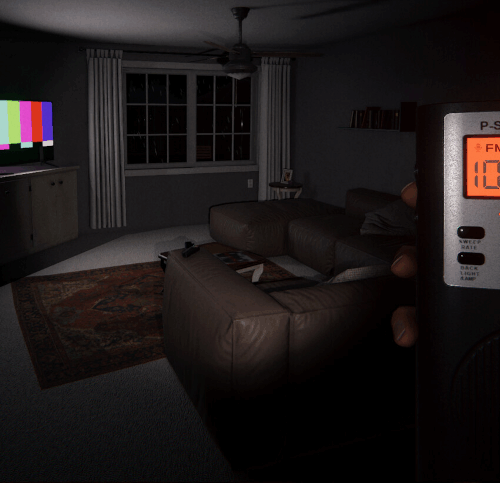
September 15th, 2025 marks a monumental milestone in the gaming world, Phasmophobia, the indie psychological horror phenomenon that transformed ghost hunting from a niche interest into a global gaming obsession, celebrates its fifth anniversary. What started as a small Early Access release has evolved into one of Steam’s most beloved cooperative horror experiences, captivating over 25 million players worldwide.
From Humble Beginnings to Horror Phenomenon
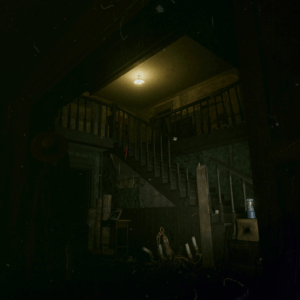 Five years ago, on September 18, 2020, Kinetic Games launched Phasmophobia into Steam’s Early Access program at the modest price of $13.99. Few could have predicted that this four-player cooperative psychological horror game would become the cultural phenomenon it is today. The timing proved serendipitous, releasing just weeks before Halloween 2020, during a period when the world was largely confined to their homes due to the global pandemic.
Five years ago, on September 18, 2020, Kinetic Games launched Phasmophobia into Steam’s Early Access program at the modest price of $13.99. Few could have predicted that this four-player cooperative psychological horror game would become the cultural phenomenon it is today. The timing proved serendipitous, releasing just weeks before Halloween 2020, during a period when the world was largely confined to their homes due to the global pandemic.
The game’s premise was deceptively simple yet brilliantly executed: teams of up to four players take on the role of paranormal investigators, armed with an arsenal of ghost-hunting equipment to identify supernatural entities haunting various locations. What set Phasmophobia apart from other horror games wasn’t just its innovative use of voice recognition technology, where ghosts could literally hear and respond to player voices, but its perfect balance of genuine terror and cooperative gameplay that encouraged friends to face their fears together.
The game began its meteoric rise in popularity around the beginning of October 2020, coinciding with the Halloween season when it started trending and being showcased by notable Twitch streamers and YouTubers. This organic growth through content creation and word-of-mouth recommendations became the foundation of Phasmophobia’s enduring success.
The Early Access Journey: Ambitious Vision, Mixed Execution
Phasmophobia’s five-year journey has been defined by its commitment to the Early Access development model, though this path hasn’t been without significant bumps along the way. Unlike many games that use Early Access as a brief testing period, Kinetic Games has embraced it as a comprehensive development philosophy, using community feedback to shape every aspect of the game’s evolution, sometimes to the frustration of long-time players.
According to the developers’ own FAQ, their approach to Early Access was clear from the beginning: “We want to get the game into the hands of players midway through development in order to make sure we make the best game possible.” While this philosophy has maintained player engagement and delivered regular content updates, it has also exposed the inherent challenges of developing a complex multiplayer horror game in public view.
The Early Access journey has been marked by persistent technical issues that have plagued the game since its initial release. Weather conditions can dramatically impact framerates on larger maps, with rain completely preventing evidence gathering on certain maps like Campsite, while a slow leveling system stalls progression and the game suffers from poor optimization and numerous bugs despite its modest visual requirements.
The Reality of Extended Early Access
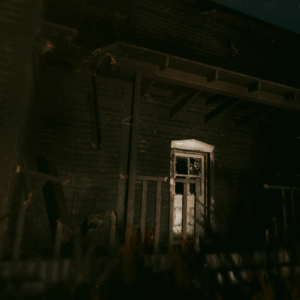 While Phasmophobia’s Early Access success story is compelling, the reality of a five-year development cycle in public view reveals both the potential and pitfalls of this approach. The game has undeniably grown from its modest beginnings, but this growth has come at the cost of stability and polish that players might expect from a title with such commercial success.
While Phasmophobia’s Early Access success story is compelling, the reality of a five-year development cycle in public view reveals both the potential and pitfalls of this approach. The game has undeniably grown from its modest beginnings, but this growth has come at the cost of stability and polish that players might expect from a title with such commercial success.
The extended timeline, with full release still planned for 2026, representing six years in Early Access, raises questions about development efficiency and scope management. Players who purchased the game years ago continue to encounter fundamental issues that impact basic gameplay functionality. The promise of continuous improvement sometimes feels more like perpetual beta testing, with each update potentially introducing new problems alongside intended improvements.
The game’s pricing strategy reflects this tension. While the developers have been transparent about planned price increases as content expands, players who paid for Early Access years ago might reasonably expect a more stable, feature-complete experience by now. The balance between supporting ongoing development and delivering value to existing customers becomes increasingly delicate as the Early Access period extends.
Cross-platform expansion has highlighted these underlying issues rather than resolved them. Console players discovering Phasmophobia for the first time are encountering the same fundamental problems that have persisted on PC, suggesting that platform expansion may have taken priority over addressing core technical debt.
Anniversary Celebrations: Honoring the Community
The fifth anniversary celebration demonstrates Kinetic Games’ deep appreciation for their community. Starting September 15th, 2025, players are being treated to a week-long festival of activities and rewards that acknowledge both the game’s achievements and the dedication of its player base.
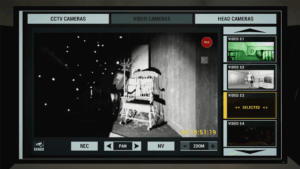 The centerpiece of the celebration is the first-ever Double XP challenge, running through September 21st. All activities completed during this period reward players with doubled experience points, clearly marked as “5th Anniversary, x2” on the debriefing screen. This mechanic not only provides tangible benefits to players but also encourages community participation during the anniversary window.
The centerpiece of the celebration is the first-ever Double XP challenge, running through September 21st. All activities completed during this period reward players with doubled experience points, clearly marked as “5th Anniversary, x2” on the debriefing screen. This mechanic not only provides tangible benefits to players but also encourages community participation during the anniversary window.
Visual enhancements to the game’s lobby area create a festive atmosphere, with decorations that transform the usually utilitarian staging area into a proper celebration space. These aesthetic touches demonstrate the developers’ attention to creating memorable experiences that extend beyond simple gameplay mechanics.
The introduction of the Veteran ID Card and Badge serves as a permanent commemoration for players who participated in the anniversary celebrations. This exclusive cosmetic reward creates a sense of belonging and achievement within the community while providing a lasting memento of this milestone moment.
Expanding Reach Through Twitch Integration
The anniversary celebration’s Twitch Drops campaign illustrates Phasmophobia’s sophisticated understanding of modern gaming culture. Running from September 15th through 22nd, the campaign offers streamers the ability to distribute animated versions of the Veteran ID Card and Badge to viewers who watch two hours of Phasmophobia content.
This initiative serves multiple purposes: it rewards the streaming community that has been instrumental in the game’s success, provides additional exposure through content creation, and offers players alternative methods to engage with the game beyond direct play. The timing coincides perfectly with the in-game celebrations, creating a unified cross-platform experience.
Recent improvements to the Twitch Drops system demonstrate the developers’ commitment to user experience refinement. The addition of account name display functionality and a disconnect button directly within the game interface addresses common user confusion and provides greater control over account linking processes.
Technical Challenges and Performance Struggles
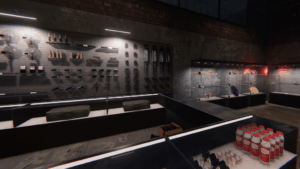 Despite its commercial success, Phasmophobia’s technical foundation has remained problematic throughout its Early Access period. The game suffers from significant optimization issues, with players consistently reporting high CPU usage, frequent crashes, and performance problems that seem disproportionate to its visual quality.
Despite its commercial success, Phasmophobia’s technical foundation has remained problematic throughout its Early Access period. The game suffers from significant optimization issues, with players consistently reporting high CPU usage, frequent crashes, and performance problems that seem disproportionate to its visual quality.
Weather conditions can determine framerates, rain prevents evidence gathering on specific maps like Campsite, and the Campsite map itself has “abysmal” framerates, according to community complaints. These technical issues extend beyond simple performance problems, rendering above 60fps creates graphical bugs with motion blur during movement, and the game “is just not very well optimized on PC and suffers from a lot of bugs and performance issues” despite not being particularly visually demanding.
Cross-platform implementation has introduced additional complications. The PSVR2 version suffers from “finicky controls” and is considered “a bit of a letdown”, while console players frequently experience connectivity issues and VR integration problems that can leave planned gaming sessions frustrated before they begin.
The technical problems aren’t merely inconveniences, they actively interfere with core gameplay mechanics. Ghost behavior can become inconsistent, evidence collection systems sometimes fail to register properly, and server stability issues can interrupt investigations at crucial moments. These problems have persisted across multiple major updates, suggesting deeper architectural issues rather than simple bugs that can be quickly patched.
Community-Driven Development: Promise and Frustration
Perhaps the most remarkable aspect of Phasmophobia’s development has been its genuinely collaborative approach to community involvement, though this relationship has been strained by contentious updates and communication issues. The developers have consistently emphasized that “the community will be involved in every step of development and can provide us feedback and suggestions in the Steam Discussions as well as our Discord server.”
However, community sentiment isn’t uniformly positive. Some updates have left the game in what players describe as “an unplayable mess,” with developer responses on platforms like Reddit sometimes coming across as dismissive of legitimate player concerns. The phrase “another early access game ruined by devs ego” has appeared in community discussions, highlighting tensions between developer vision and player expectations.
The game’s evolution reflects genuine incorporation of community suggestions across equipment additions, map redesigns, and ghost behavior modifications, but the implementation has been inconsistent. Major updates sometimes introduce game-breaking bugs that require immediate hotfixes, and the slow pace of addressing fundamental technical issues has frustrated long-term players who feel their feedback is acknowledged but not adequately addressed.
Private beta programs for active community members create direct channels for testing and refinement, yet significant problems still make it into public releases. The disconnect between testing environments and the broader player experience suggests either insufficient beta testing scope or inadequate response to beta feedback, both concerning for a development model predicated on community involvement.
The Economics of Sustained Development
Phasmophobia’s pricing strategy during Early Access reflects thoughtful consideration of both development sustainability and player value. The developers have been transparent about their approach: “The price will change during the early access period once we have added a significant amount new content. The price will likely change upon final release out of early access however we will always give players enough warning before we make any pricing changes.”
This transparency builds trust with the community while ensuring that development can continue at a sustainable pace. The gradual price increases as content expands provide fair value to early adopters while supporting continued development costs. Current players benefit from lower prices in exchange for participating in the development process and dealing with the inherent uncertainties of Early Access.
Cultural Impact and Legacy
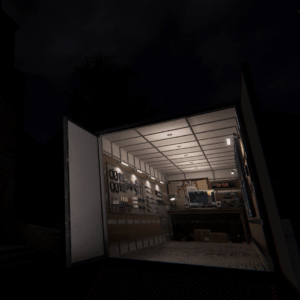 Beyond its commercial success, Phasmophobia has significantly influenced gaming culture and the horror genre specifically. The game popularized cooperative ghost hunting as a gaming concept, inspiring numerous imitators and establishing new expectations for voice integration in horror games. Its approach to balancing genuine scares with cooperative gameplay has become a template for subsequent horror titles.
Beyond its commercial success, Phasmophobia has significantly influenced gaming culture and the horror genre specifically. The game popularized cooperative ghost hunting as a gaming concept, inspiring numerous imitators and establishing new expectations for voice integration in horror games. Its approach to balancing genuine scares with cooperative gameplay has become a template for subsequent horror titles.
The game’s impact extends beyond gaming into broader popular culture, with references appearing in various media and ghost hunting terminology from the game entering common usage among horror fans. The hashtag #5YearsOfPhasmo for anniversary celebrations reflects this cultural penetration, players aren’t just celebrating a game, but commemorating shared experiences and community memories.
Streaming and content creation communities have been particularly influenced by Phasmophobia’s design. The game’s natural tendency to generate memorable, shareable moments has made it a consistent favorite among content creators. Its cooperative nature encourages group streaming sessions, creating collaborative content that strengthens both creator relationships and viewer engagement.
Looking Forward: The Future of Supernatural Gaming
As Phasmophobia enters its sixth year of development, the foundations laid during its first five years position it uniquely for continued growth and innovation. The planned 2026 full release represents not an endpoint but a transition to a new phase of development and community engagement.
The game’s success has validated the Early Access model for complex, community-driven projects, demonstrating that transparent development processes and genuine player involvement can create sustainable, long-term success. This approach may well influence how future indie developers approach similar projects, particularly in the horror genre where player feedback is crucial for balancing scares with playability.
Technical innovations pioneered in Phasmophobia, particularly its voice recognition systems and dynamic ghost AI, have established new standards for interactive horror experiences. Future updates and the eventual full release will likely continue pushing these boundaries, potentially incorporating emerging technologies like improved AI, enhanced VR capabilities, and more sophisticated player behavior analysis.
A Community United by Fear and Friendship
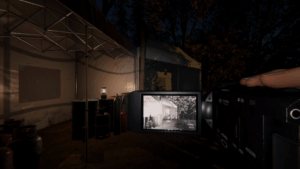 The anniversary celebration request for community stories using #5YearsOfPhasmo reveals the deeper significance of Phasmophobia’s success. This isn’t simply a game that people play, it’s a shared experience that has created lasting friendships, memorable moments, and a genuine sense of community among players who might otherwise never have connected.
The anniversary celebration request for community stories using #5YearsOfPhasmo reveals the deeper significance of Phasmophobia’s success. This isn’t simply a game that people play, it’s a shared experience that has created lasting friendships, memorable moments, and a genuine sense of community among players who might otherwise never have connected.
Ghost hunting in Phasmophobia requires communication, cooperation, and trust, elements that naturally foster social bonds. The game’s design encourages players to face fears together, creating shared experiences that extend far beyond the digital environment. These relationships, formed in the crucible of supernatural terror, often prove remarkably durable and meaningful.
The 25 million players who have joined this journey represent more than a customer base, they constitute a community united by shared experiences of virtual ghost hunting, collective problem-solving, and mutual support in moments of digital terror. This community aspect may be Phasmophobia’s most significant achievement, transforming a simple horror game into a platform for human connection.
Conclusion: Here’s to the Next Five
As Kinetic Games and the global Phasmophobia community celebrate five years of supernatural investigation, the anniversary serves as both commemoration and anticipation. The game that began as a modest Early Access experiment has evolved into a defining title of the modern horror gaming landscape, proving that innovative design, community engagement, and sustained development can create lasting cultural impact.
The next five years promise continued evolution, with the planned 2026 full release representing just one milestone in an ongoing journey. New platforms, emerging technologies, and an ever-growing community of ghost hunters ensure that Phasmophobia’s influence will continue expanding.
For the 25 million players who have already joined this supernatural journey, the fifth anniversary represents a moment to reflect on shared scares, celebrate collective achievements, and prepare for future frights. For Kinetic Games, it’s validation of their community-first development approach and encouragement to continue pushing boundaries in cooperative horror gaming.
As the ghost hunting equipment is packed away and the anniversary decorations come down, one thing remains certain: the spirit of Phasmophobia, built on community, cooperation, and the shared thrill of facing the unknown together, will continue haunting players for years to come.
Here’s to the next five years of supernatural investigations, spectral encounters, and the community that makes it all possible. The ghosts are waiting, and the hunt continues.

